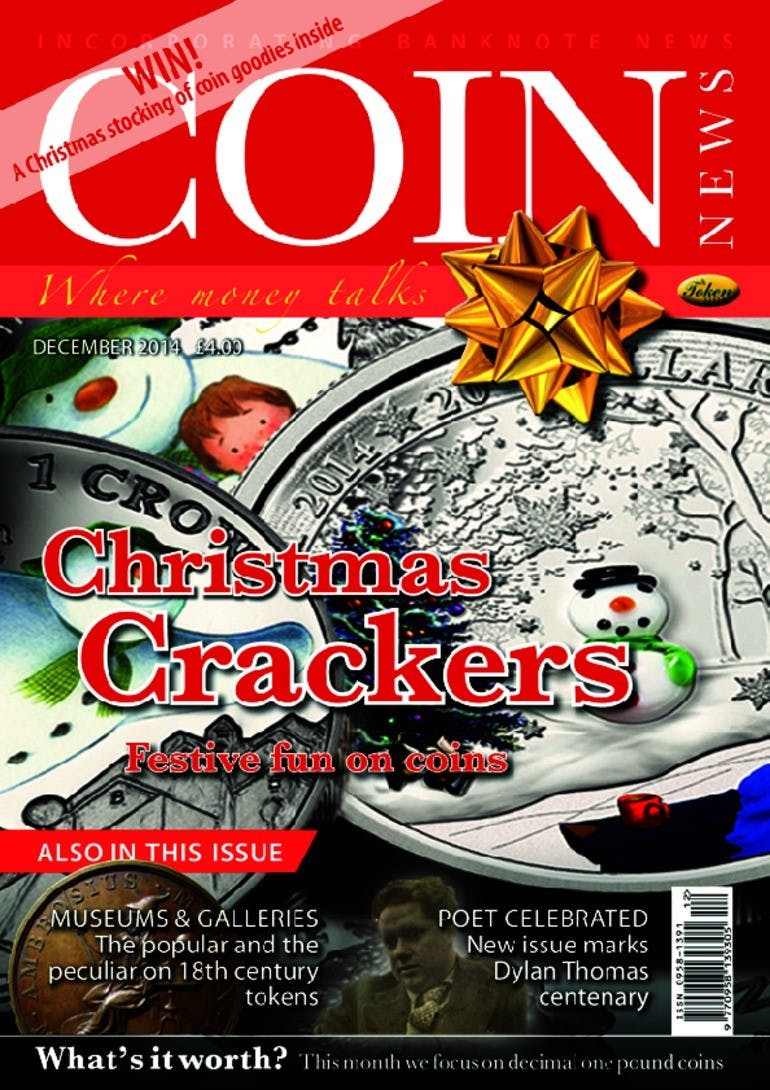Christmas Crackers
Volume 51, Number 12, December 2014
Premium rate number RECENTLY the Antiques Trade Gazette (ATG) carried a story about Christie’s the auctioneers and their plans for the vendor’s premium at their sales. Apparently the intention is to add a 2 per cent “success fee” on items that reach or exceed the top estimate. Let me just run that by you again: if you are planning to sell something at Christie’s and it achieves on or above top estimate, then you will pay an additional 2 per cent on top of the existing vendor’s commission. . . . Try as I might I cannot see how this is ever going to work! Christie’s, of course, believe that the extra 2 per cent would be a reflection on how well their marketing and advertising department did on promoting the sale, how well the catalogue was compiled and how well the auctioneer did on the day. Their attitude is “if we work hard and get you more money then we deserve more remuneration”, but collectors and sellers are saying that it is more along the lines of “you didn’t know what you were doing, you got the estimate wrong and now I am having to pay extra because of your mistake”. There may well be merit in both arguments. The problem is that auction estimates have always been somewhat fluid—the whole point of an auction, as opposed to selling to a dealer or privately, is that the vendor hopes that two or more bidders will like the item and bid it up far beyond its “book” value and auction estimates have always been flexible enough to encourage that. In our world an estimate will, most of the time, either reflect the perceived book price of the coin, with the auctioneer relying on the eye appeal of the piece or the fact that two people may be missing it from their collection, to run that price up; or it will be a generic “guide” as the rarity and/or condition of the piece means that a true market value is difficult to define and thus must be left up to the bidders to determine. Frequently the low estimate will reflect a reserve that the seller has asked to be placed on the coin; but where there is no reserve, collectors often believe that the estimate is lower than one might have expected, as a way to encourage buyers to place a bid on the off chance they may get a bargain. We will all have seen auction lots with estimates that we consider “cheap” and that may well have encouraged us to have a go on the day—invariably such actions are futile of course, as the true price of the coin usually comes out on the day. But there is always that chance. . . . If it is the case that an estimate range is left a little low to encourage bidding (and of course we couldn’t possibly say that that ever happens), where then does the Christie’s new policy fit in? They would never be able to adopt a strategy of erring on the side of caution lest they be accused of deliberately keeping an estimate low in order to maximise profit. Now I am certain that the auction house would say they only ever use realistic estimates and thus, should a piece “fly” in one of their sales, then it has to be down to their abilities as auctioneers and so deserves reward. But is that necessarily so? What of items where no “real” value can be determined? If the auction house is confronted by a true rarity and simply has no idea what it will fetch, how then does a final price way above an arbitrary figure they happened to place on the piece reflect their “hard work”? Luckily such true rarities are not as common in the coin world as they are in the world of antiques, but even so can you imagine if this practice was adopted in numismatics? A rare metal detecting find or hitherto unknown die-variety which simply cannot be truly priced and could well fetch many times an auctioneer’s estimate would attract a premium simply because no one really knew how to value it. Hardly seems fair does it? A number of auctioneers have already come out against the plans by Christie’s, including Paul Viney, the Chairman of Woolley and Wallis who, in a recent edition of the ATG claims the concept is “arrant nonsense”. At this stage we await the reaction of other auction houses that directly have a bearing on the numismatic market, but the consensus amongst collectors seems to be that this whole thing is a terrible idea and won’t last—but that’s what was said about the buyers’ premium when it was first introduced and look where we are with that today!
Order Back Issue
You can order this item as a back issue, simply click the button below to add it to your shopping basket.

